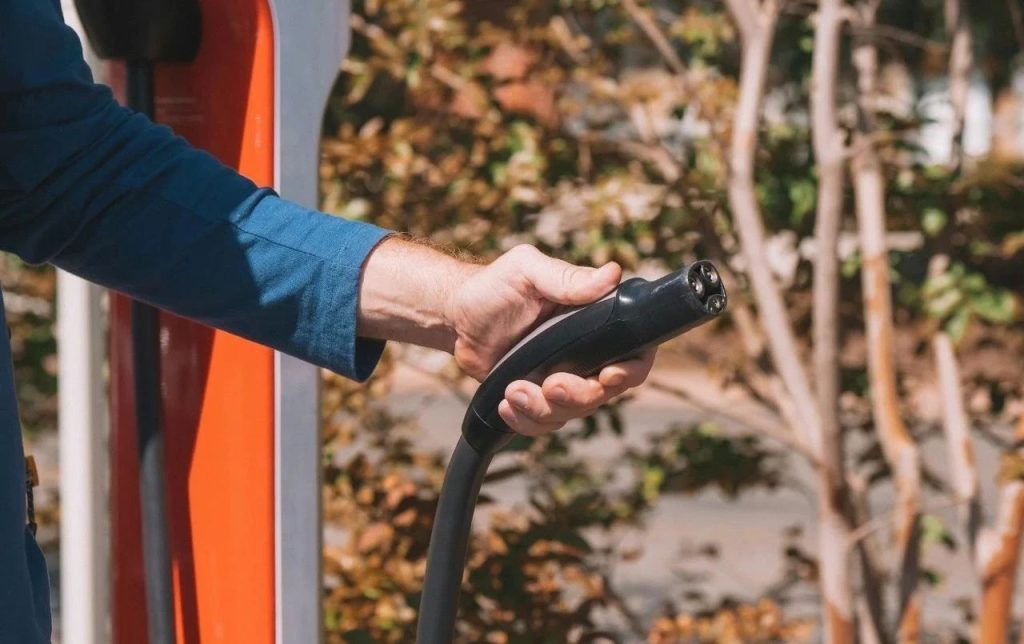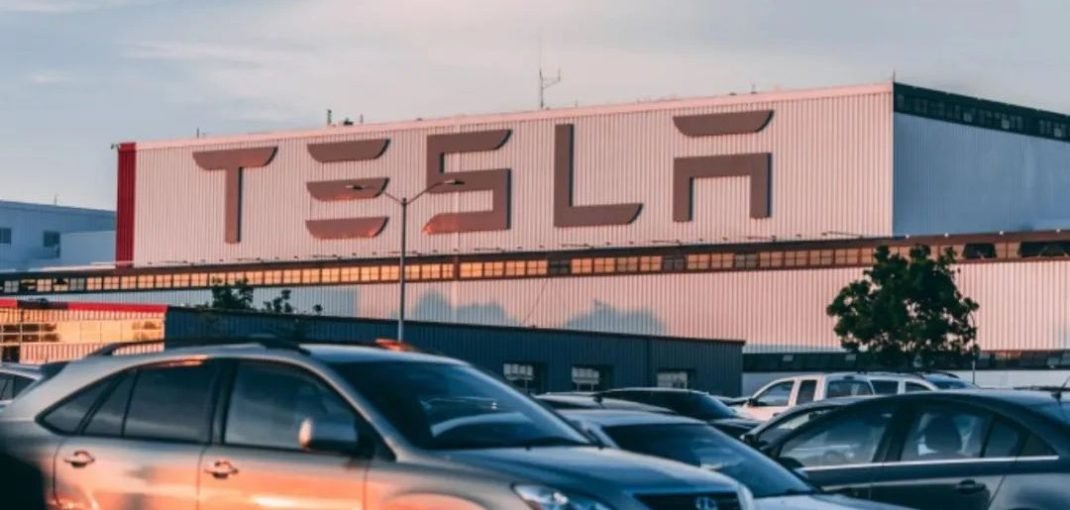The reason behind Musk’s rare response to Tesla’s declining market share in China is that Tesla is gradually losing its halo effect. Faced with the collective siege of Chinese auto brands, Tesla urgently needs to come up with a new killer weapon.
Musk responds to Tesla’s declining market share in China
Just as China’s new energy vehicle market is booming, Musk and his Tesla are facing different voices.
In response to the recent news that Tesla electric vehicles have been “cold” in the Chinese market and their market share has declined, Tesla CEO Musk has rarely responded. What made Musk personally respond?
According to the Financial Times, citing data from Shanghai consulting firm Automobility, in the first seven months of this year, Tesla’s share of the electric vehicle market in China fell from 9% a year ago to 6.5% in July this year.

Musk responded to the above news, saying that those who believe in these news are stupid, and Tesla’s Shanghai Super Factory is running at full capacity.
As usual, Tesla rarely responds to various rumors in the market, but it was unexpected that Musk responded personally this time.
In the face of the hotly debated question of Tesla’s declining market share in China, Musk did not seem to give a direct answer, which was a bit off the mark.
In fact, the above question and Musk’s response are not contradictory, and the two sides have different focuses and emphases. The data in the report mainly discusses market share, while Musk’s response focuses more on the production and sales of the Shanghai factory.
Tesla’s deliveries in the Chinese market have declined for months in the first half of this year, showing a bad signal at the beginning, but Tesla’s deliveries and sales in the latest month have both increased.
According to the China Passenger Car Association, in August this year, Tesla’s Shanghai factory delivered 86,700 vehicles, a year-on-year increase of 3% and a month-on-month increase of 17%.
But compared with the sales data in the same period last August, it is estimated that neither Musk nor Tesla will be happy. Tesla’s sales in the Chinese market in August exceeded 63,000 vehicles, a slight decrease of about 2 percentage points year-on-year and a month-on-month increase of 37%.
Judging from the sales data, although it has refreshed the record of domestic sales this year, it is actually driven by the subsidy of the car trade-in policy. At the end of July this year, the relevant departments announced that the subsidy standard for car scrapping and renewal was increased to 20,000 yuan for the purchase of new energy passenger cars, which is 5,000 yuan more than the purchase of fuel vehicles.
Of course, behind the sales growth, Tesla is also constantly increasing its efforts in various fancy marketing to attract consumers to buy.
From the data, although the delivery volume of Tesla’s Shanghai factory has increased, with a rare achievement of more than 63,000 monthly sales, the month-on-month data has declined.
In any case, in the first seven months of this year, Tesla’s market share in China has dropped from 9% a year ago to 6.5%. Tesla’s decline in China’s market share is definitely not a good sign.
Pressure on Tesla is growing
From the perspective of the global automobile market, China is already the world’s largest new energy vehicle market, and the penetration rate of new energy vehicles is absolutely the highest in the world.
In July this year, China’s automobile industry ushered in a historic moment, that is, China’s new energy passenger car sales exceeded fuel vehicles for the first time. According to the data of the China Passenger Car Association, in July, conventional fuel vehicles sold 840,000 units, while new energy passenger cars sold 878,000 units, with a market penetration rate of 51.1%.
The market penetration rate of new energy vehicles exceeds 50%, which means that China’s new energy vehicle market has entered a mature stage of development, and the market cultivation period for consumers has ended.

Tesla is the leading brand of new energy vehicles in the world. It first entered the Chinese market in 2012. With its leading technology, international brand, and high-end technology, Tesla has become a representative brand of high-end new energy vehicles.
Tesla has maintained rapid development in the Chinese market, with sales rising steadily. Its influence and market share have been unmatched by Chinese local auto brands and new car brands for a long time. At that time, one of Tesla’s core advantages was its first-mover advantage and leading advantage.
With the continuous development of China’s new energy vehicle industry and the rise of new car brands such as Wei, Xiaoli, and Li Auto, traditional fuel vehicle brands have transformed or launched new energy vehicle sub-brands, especially BYD has taken the lead in achieving full transformation to new energy, and China’s new energy vehicle market has entered a mature stage.
Chinese new energy vehicle brands understand Chinese consumers better, and the models of major brands have more diversified designs, more intelligent car machines, and faster model updates and iterations, which can attract more consumers, especially a new generation of young consumers.
A few months ago, when a friend changed his car, he compared Tesla with several Chinese local auto brands, and finally chose a luxury Chinese brand. He shared that Tesla’s design has not been updated for a long time and seems a bit “outdated”.
Although Tesla’s market share in China has declined in the first few months of this year, the market needs to look at this issue dialectically.
Tesla is still a big player in the Chinese auto market, and many consumers will still choose Tesla. Tesla’s sales in China exceeded 63,000 in August, which is the most direct manifestation. For example, Tesla Model Y’s sales have always dominated the sub-segment, and no one can shake it in the short term.
What is more noteworthy is that behind Tesla’s year-on-year decline in market share in China, Tesla is being collectively besieged by Chinese auto brands, and the siege is becoming more and more fierce.
Different auto brands have formed direct competition with Tesla in different vehicle models.
For example, in the field of pure electric luxury models, the representative brand is Weilai. In order to compete with Tesla, Weilai has also launched the Ledao sub-brand. Xiaopeng Motors’ G9 model can also compete with Tesla. Xiaomi SU7 will also attract some Mi fans.
Nowadays, Tesla’s biggest competitor is the numerous hybrid car brands and models.
Among them, the most representative brands are Ideal Auto and Huawei’s car brands, which are mainly extended-range models.
Another rival of Tesla is BYD, which has been regarded as a strong competitor by Musk. BYD mainly promotes plug-in hybrid models and has launched multiple sub-brands.
According to Automobility data, China’s electric vehicle sales have increased by more than 30% so far this year, which has been boosted by a nearly 90% jump in plug-in hybrid vehicle sales.
More and more Chinese car companies are accelerating the launch of hybrid models, which is not a good sign for Tesla.
For example, Xiaopeng Motors is also stepping up the development of new hybrid technology, and Zeekr also said it will launch its first hybrid car early next year. Some media reported that Xiaomi Motors will also launch new models with extended-range power in the future.
Tesla urgently needs a new killer weapon
Nowadays, Tesla’s market share in China has declined, but Tesla cars are still favored by consumers, and Musk and Tesla are naturally paying close attention.
Tesla is gradually losing its halo effect. If Tesla wants to continue to be attractive and competitive in the Chinese market in the future, it urgently needs to come up with new killer features: FSD, cheap models, and customized models for the Chinese market.
The first new killer feature that Tesla wants to introduce to the Chinese market is the FSD fully automatic driving advanced driving assistance system.

On September 5, Tesla’s AI team released a global deployment roadmap for the FSD function on its official social media account. Tesla plans to launch the FSD function in the Chinese and European markets in the first quarter of 2025, but the specific time still needs to wait for the approval of local regulators.
Since the beginning of this year, the market has been paying close attention to the news of Tesla’s FSD landing in China, and news has been heard from time to time. For example, some media reported in June that the Shanghai Autonomous Driving Demonstration Zone had issued a road test license to Tesla, and FSD may be testing. In July, another media reported that Musk confirmed the news that FSD will soon be launched in China at the second quarter earnings conference this year.
Tesla’s FSD is indeed at the forefront of the global industry. Once it is launched in the Chinese market in the future, it will surely stir up the Chinese auto market again and trigger a catfish effect.
Facing the fiercely competitive Chinese new energy vehicle market, Tesla’s second killer weapon is the cheap version of the car. Tesla needs to expand the car-buying population.
According to foreign media reports, Tesla has launched a low-priced version of Model 3 in overseas markets, which is hailed by the market as the beggar version of Model 3. The leather seats are replaced with fabric seats, the colored ambient lights are turned to white, and the rear entertainment screen is also removed, leaving only the air-conditioning vents and Type-C interface. Its price in Mexico is about 250,000 yuan, which is about 28,600 yuan lower than the price of the standard version in the United States.
Obviously, Tesla’s launch of the low-priced version of Model 3 is a test. If the effect is good, it is expected to be introduced to other countries in the world.
However, the market is more looking forward to Tesla’s new entry-level cheap version of Model 2 to be launched in the future. Musk has confirmed that it is planned to be officially launched in 2025, with an estimated price of US$25,000 (about RMB 180,000), which will be jointly promoted with Tesla’s Robotaxi project.
In the future, China will certainly be the core market for Tesla’s new cheap version of the car, which can provide new choices for consumers who like the Tesla brand but have limited budgets.
Faced with the Chinese market with diversified car usage scenarios and needs, Tesla may as well launch customized models for the Chinese market.
Recently, some media reported that the mid-term facelifted Tesla Model Y will be officially launched in early 2025. At the same time, Tesla may launch a 6-seater version in the Chinese market, and its body size will be increased, becoming a special model for China.
In response to market rumors that Tesla will launch a 6-seater version of the Model Y, Tesla China responded that it was false news. Musk also responded on social media that Tesla will not launch a facelifted Model Y this year.
Although Tesla and Musk have responded to rumors about the 6-seater Model Y, it will not happen now, but it does not mean that it will not happen in the future.
Recently, Mercedes-Benz announced that it would increase its investment in China and plans to start production of the new GLE SUV long-wheelbase and other models exclusively for China from 2025. Mercedes-Benz is naturally moved and jealous when it sees the sales performance of the BMW X5 after it is produced in China.
Tesla might as well boldly launch customized models for the Chinese market, which may be a correct market strategy, which can not only significantly enhance the attractiveness of the Model Y model, but also increase the sales of the car series. Why not?
It is undeniable that Tesla still has considerable brand influence and market appeal in the Chinese market, whether in the past, present, or future.
China’s new energy vehicle market leads the world. With the slowdown in demand for electric vehicles in many countries around the world, and auto brands such as Mercedes-Benz, BMW, Audi, and Volvo all slowing down or abandoning their original plans to accelerate their full electrification transformation, the Chinese market will only become more important to Tesla.
In the future, the competitiveness of Chinese new energy vehicle brands will be further enhanced, market competition will further intensify, and Tesla will certainly face increasing competitive pressure.
Therefore, Tesla needs to keep telling new stories in the Chinese market and accelerate the development of new killer features.

